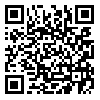Volume 22, Issue 165 (2025)
FSCT 2025, 22(165): 212-224 |
Back to browse issues page
Download citation:
BibTeX | RIS | EndNote | Medlars | ProCite | Reference Manager | RefWorks
Send citation to:



BibTeX | RIS | EndNote | Medlars | ProCite | Reference Manager | RefWorks
Send citation to:
hosseini M, kurd M. Nanoencapsulation in food industry: technology, applications and challenges; a review. FSCT 2025; 22 (165) :212-224
URL: http://fsct.modares.ac.ir/article-7-79501-en.html
URL: http://fsct.modares.ac.ir/article-7-79501-en.html
1- university of Bonab , hosseini1701@gmail.com
2- ilam university
2- ilam university
Abstract: (77 Views)
Nanocapsulation, as an innovative technology in the food industry, has great potential to improve the quality, safety, and stability of food products. This technology prevents the degradation of bioactive compounds such as vitamins, antioxidants, and antimicrobial agents by encapsulating them at the nanoscale, protecting them from environmental factors like light, temperature, and oxygen, while facilitating their controlled and targeted release. This feature enhances the shelf life and efficacy of active compounds in food products. Additionally, nanocapsules can improve consumer experiences through the gradual release of nutrients and flavorings. However, the use of nanocapsulation in the food industry faces challenges, including high production costs, safety concerns related to nanoparticles, and their long-term effects on human health. This article reviews various nanocapsulation technologies, including physical, chemical, and biological methods, and their applications in enhancing the stability and quality of food products. Furthermore, the existing challenges in this technology, including environmental issues and economic limitations, will be evaluated. Despite the numerous advantages, further research is needed to assess the safety and long-term impacts of nanoparticles so that the safe and effective use of this technology can be expanded in the food and pharmaceutical industries.
Article Type: Systematic Review |
Subject:
Bioactive compounds
Received: 2025/02/14 | Accepted: 2025/05/28 | Published: 2025/10/23
Received: 2025/02/14 | Accepted: 2025/05/28 | Published: 2025/10/23
Send email to the article author
| Rights and permissions | |
 |
This work is licensed under a Creative Commons Attribution-NonCommercial 4.0 International License. |







